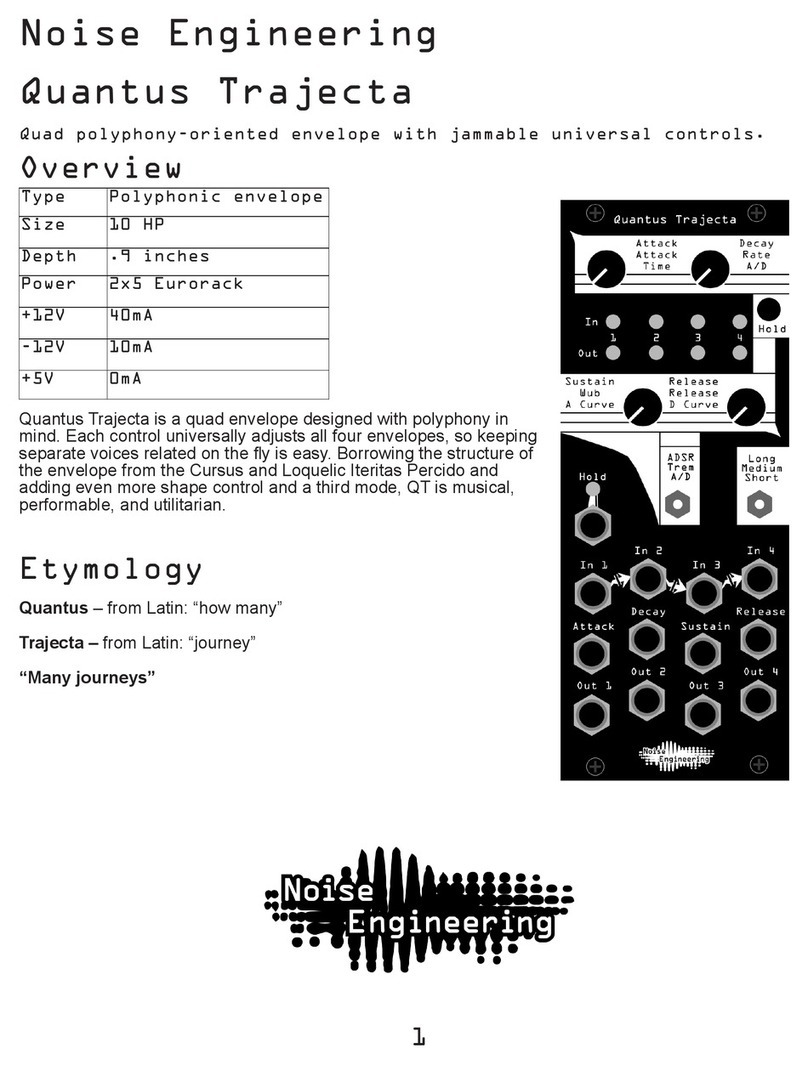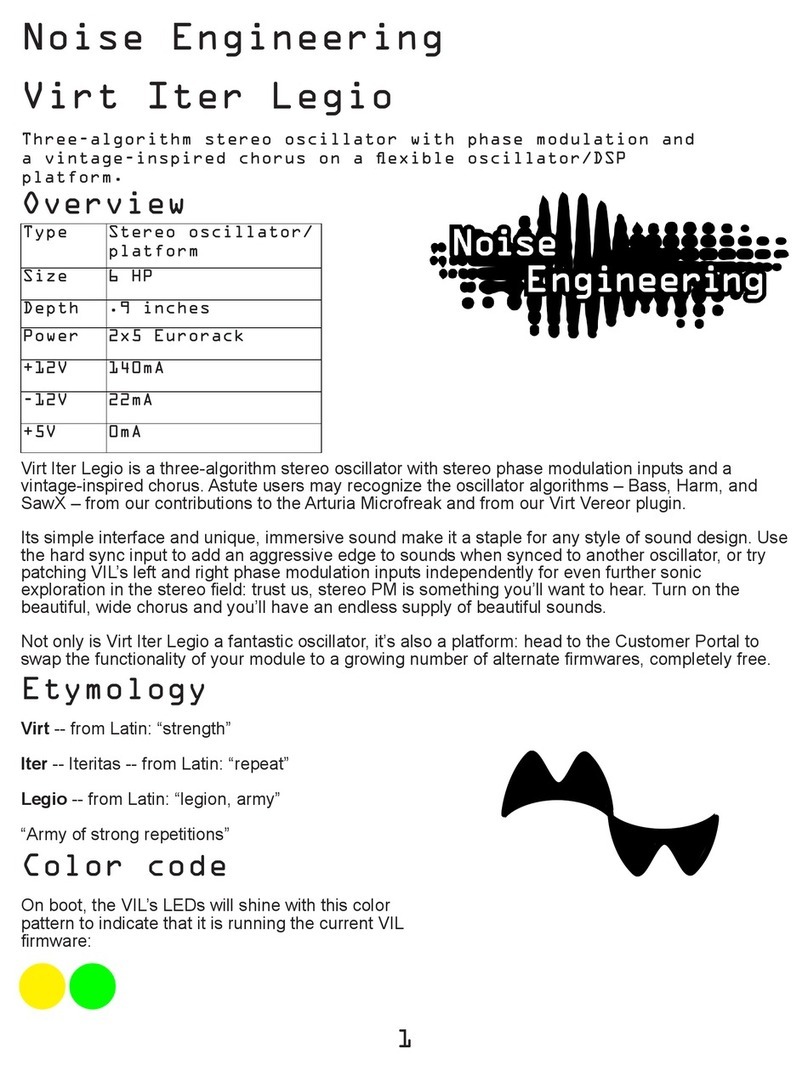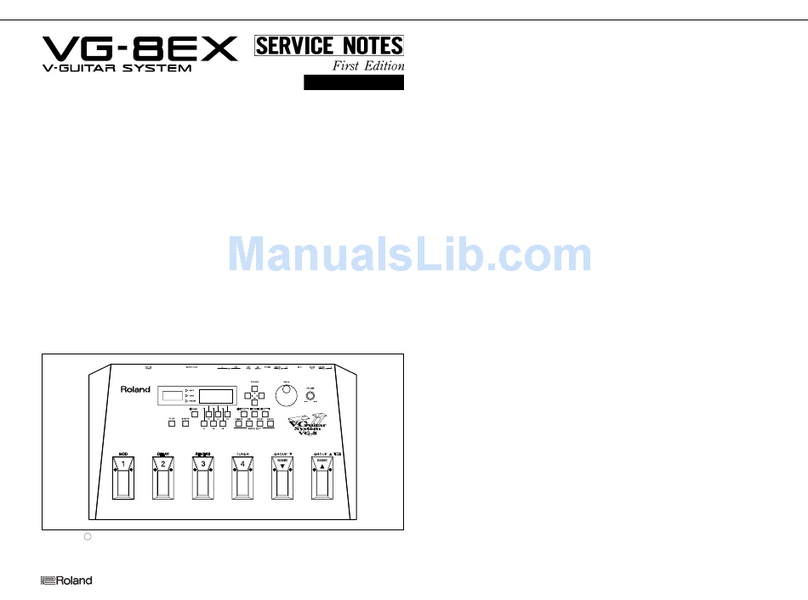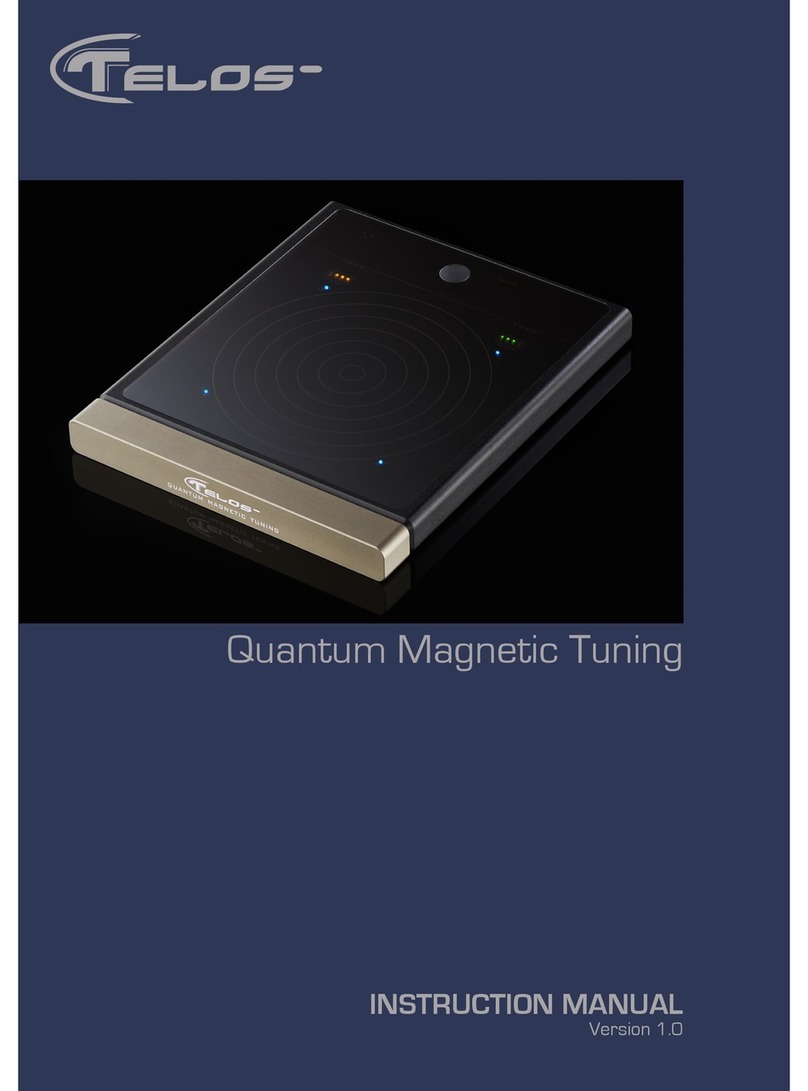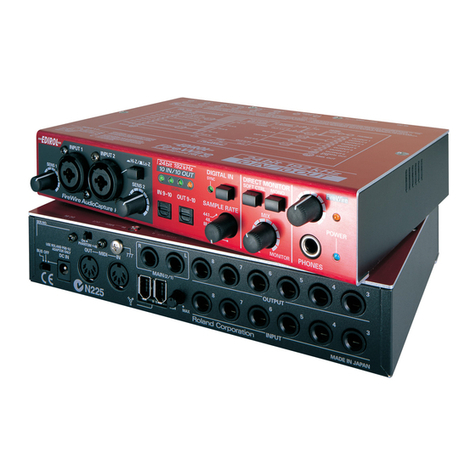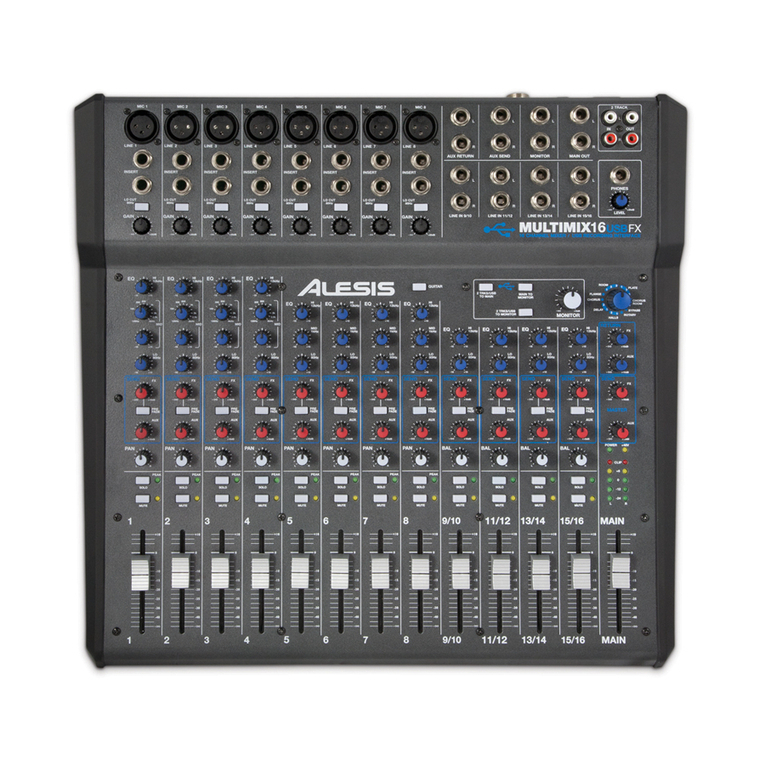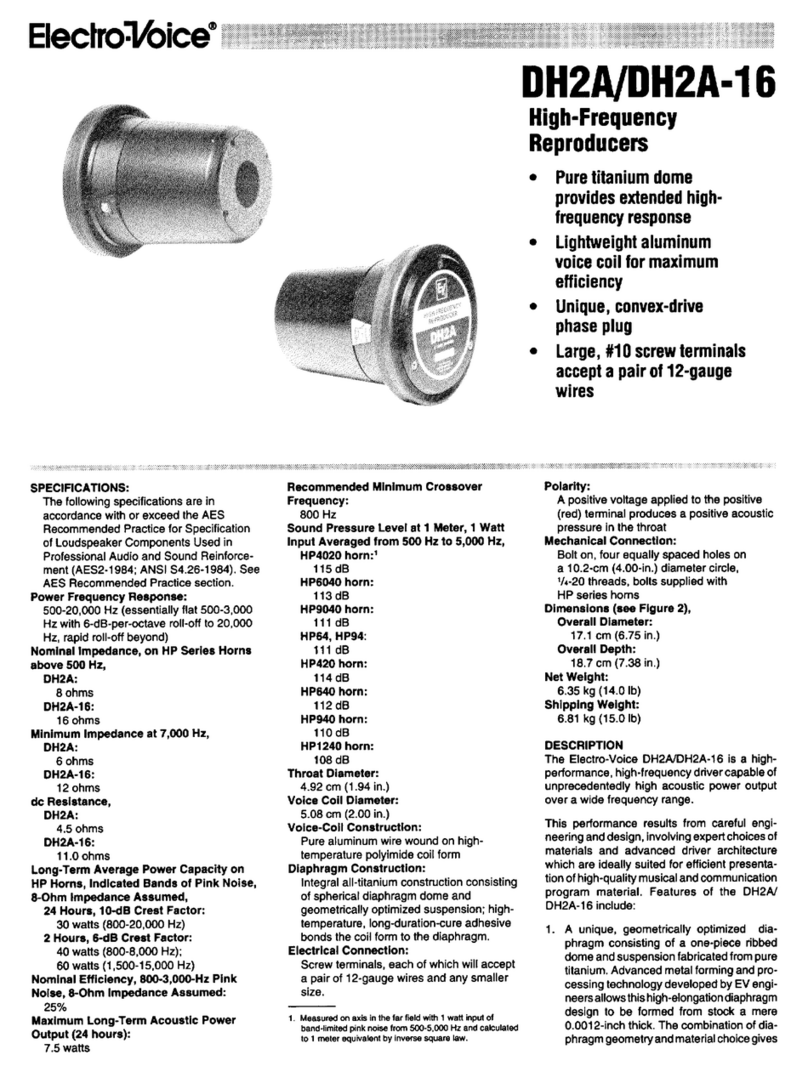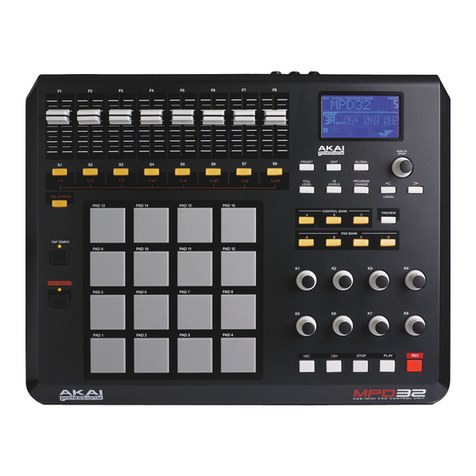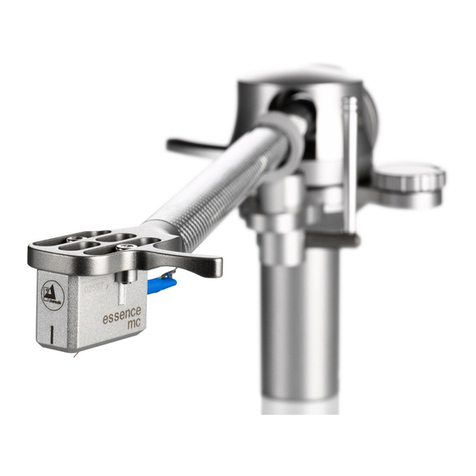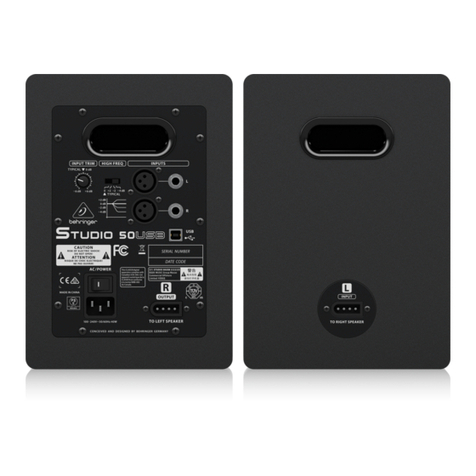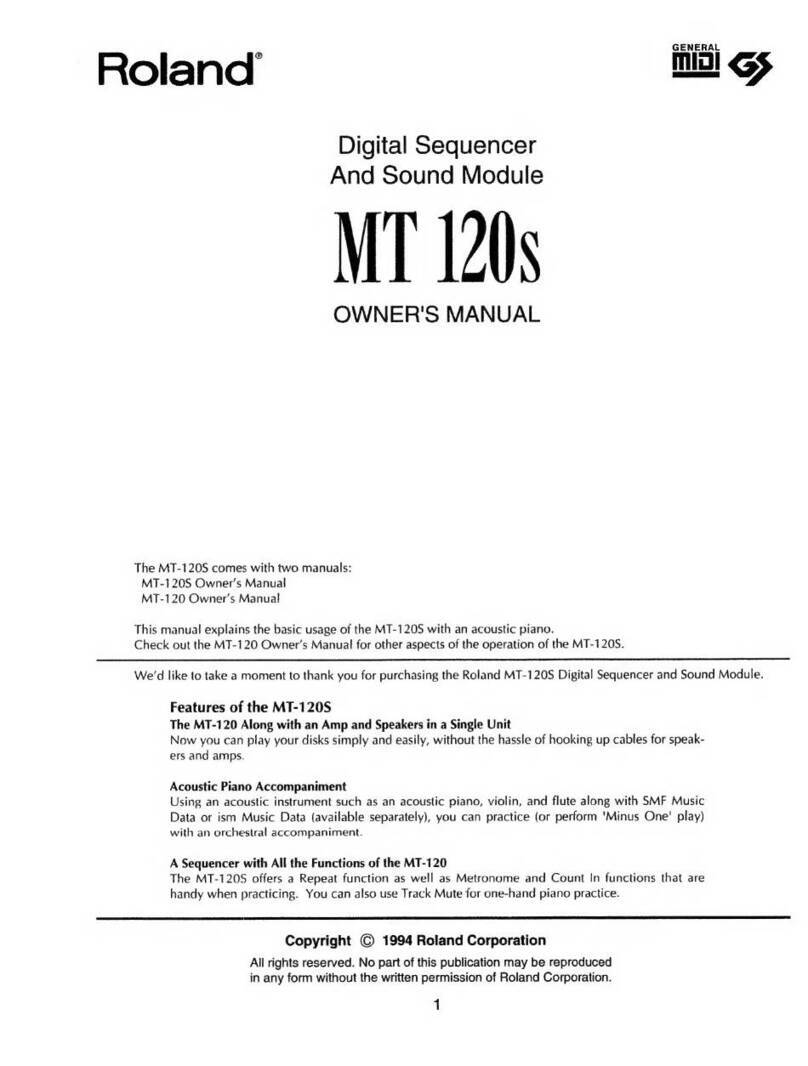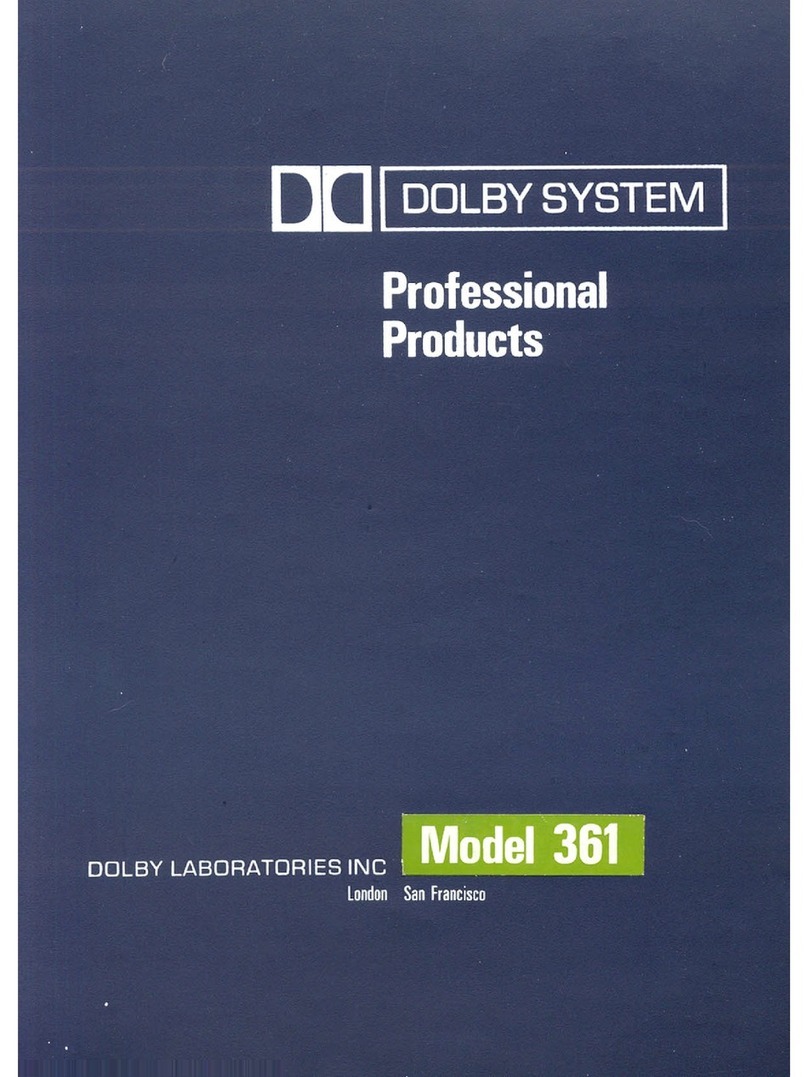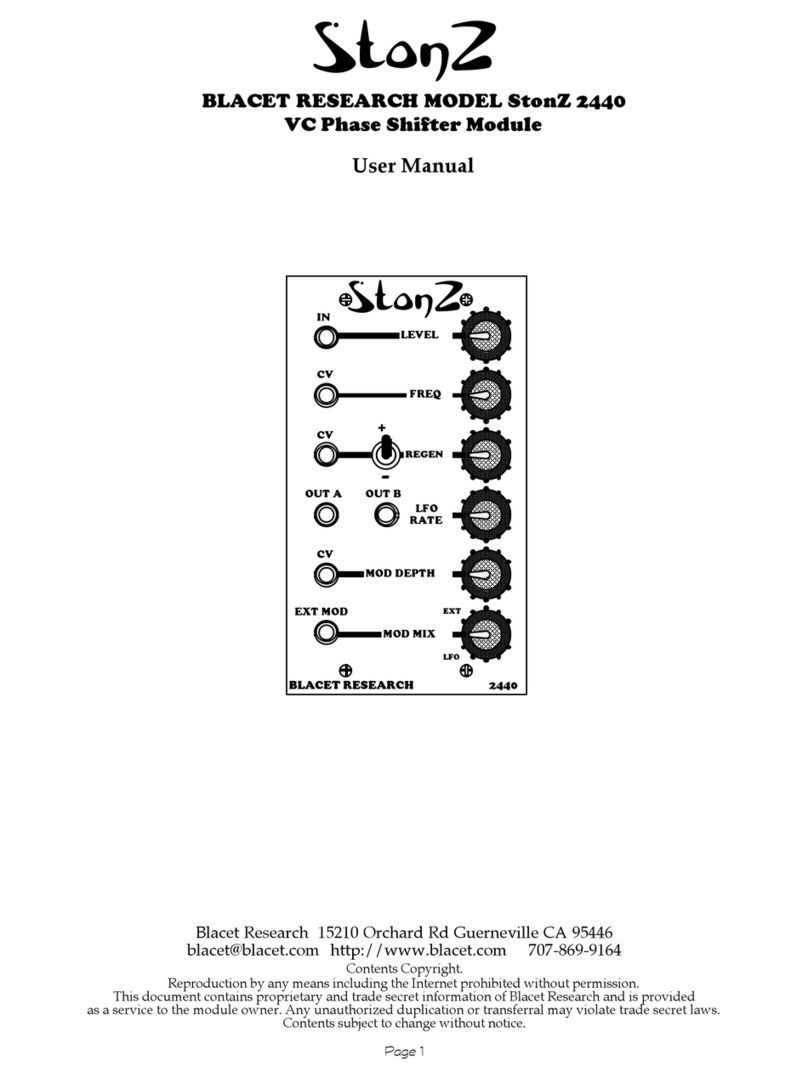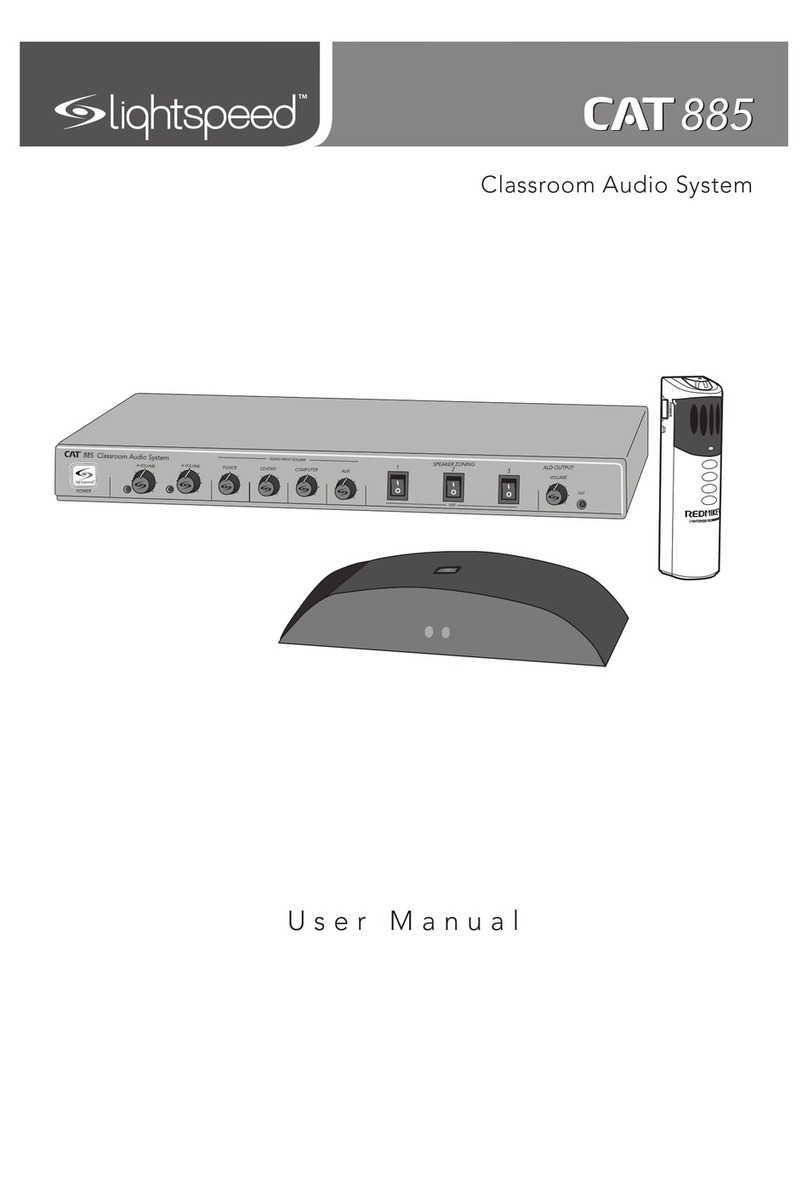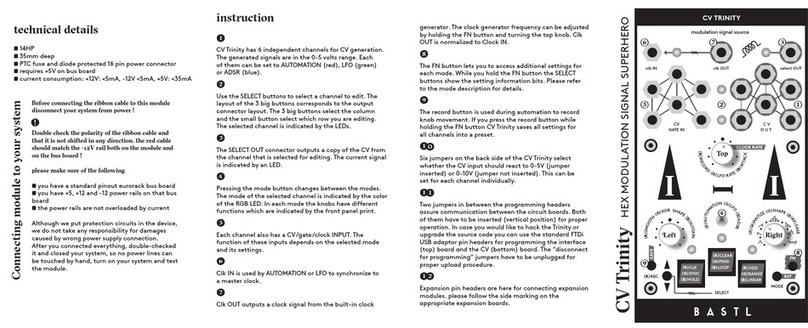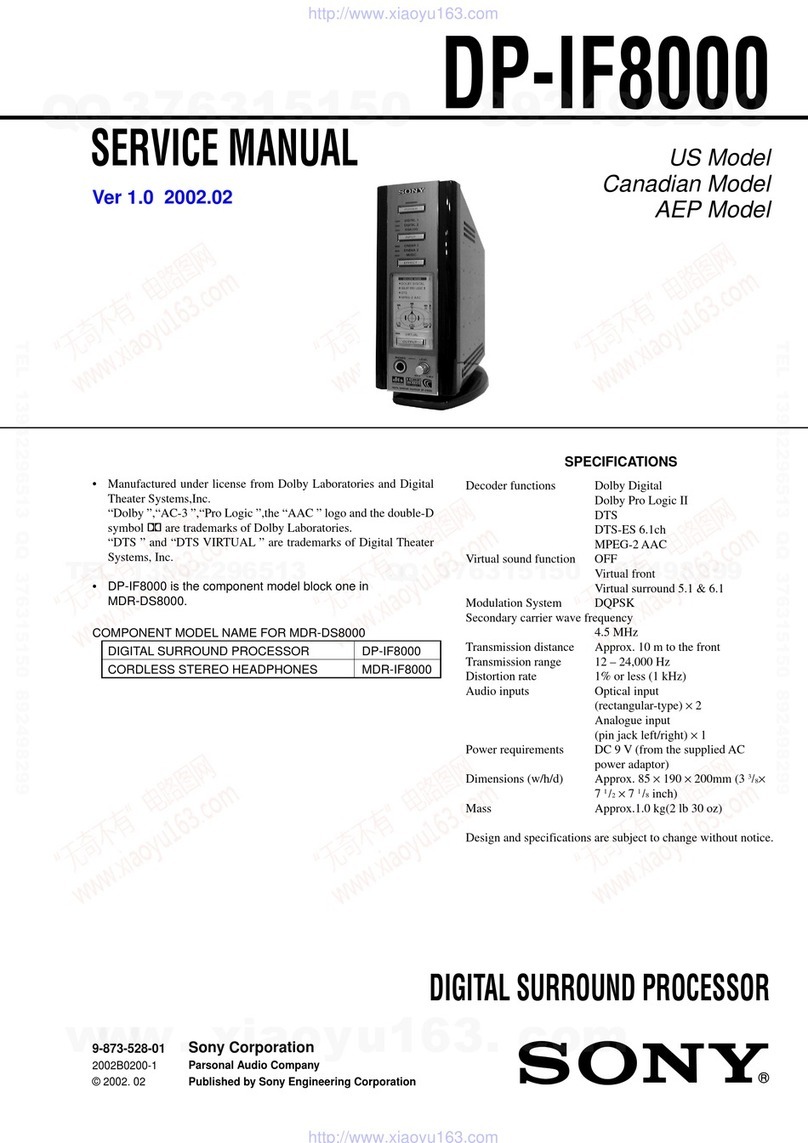Noise Engineering Imitor User manual

Imitor
Adjustable multitap delay with up to 32 taps and a unique
feedback processing structure. Create rhythmic delays,
customizable comb lters, shimmering atmospheres, and more!
User Guide

Welcome to Imitor.
Imitor is a delay designed for customization and experimentation. Many multitap delays
can be intimidating, with their complicated and cumbersome interfaces, so we designed
Imitor with powerful user-friendly controls and tap displays that are fun to interact with,
all of which are fully automatable. Set the pre-delay, pan your taps, warp time,
crescendo or decrescendo – the delay section of Imitor has so many options at your
ngertips.
Play with the Tap Delay modulation section for a wide range of control: adjust
modulation, relative LFO phase, speed, and stereo eect. Finally, the Processing
section adds a bit of Noise Engineering avor. Crank Regen to 11, Shimmer your sound,
add some suboctave with Doom, lter your delay with Tone, play with stereo width, or
add some not-so-subtle wavefolding.
Imitor excels at long, evolving echoes and creating rhythms from a single sound, but it
can also be set to extremely short delay times for comb ltering, anging, chorus, and
more.
Imitor is a delay and echo playground: if you can imagine it, you can create it with Imitor.

Tap
Tempo Sync
When Free is checked, Imitor’s delay time is unsynced, and echo timing is unrelated to
the session tempo. When Sync is checked, Imitor’s delays are synced with the session
tempo and meter.
Time (Free selected)
Sets the amount of time between taps in seconds. At low settings, echoes occur at
audio rates, useful for eects like comb ltering and anging.
Beats (Sync selected)
Sets the amount of time between taps in seconds; divisions/multiplications are
presented as a fraction. For example, a 16th note delay would be set with 4/1.
1

Time Warp
Bipolar; set the tap spacing. When the control is centered, taps are spaced evenly. To
the left, taps start fast and slow down; to the right, they start slow and speed up. This is
useful for creating bouncing ball eects where echoes accelerate over time, or impactful
bursts of echoes.
This parameter only aects tap timing when Tap Total is set to 3 or greater.
Decay
Bipolar; changes whether the taps crescendo to the left, have equal level in the center,
or decrescendo to the right.
Width
At left, the feedback loop is mono. Stereo width is increased as the knob is increased.
Angle and Rotate
Bipolar controls that adjust tap panning. These parameters work together: Angle sets
the panning of the rst tap, and Rotate osets the pan of the following taps. Useful for
creating width and variation in echo patterns.
2

Pre Delay
Sets the amount of time between an input sound and the rst delay tap. Pre delay time
presented as a fraction of the Time or Beats setting. For example, a pre delay twice the
length of the delay time would be set with ½.
Pre delay time is useful both as a creative eect and for creating space: long pre delays
are quite useful when creating rhythmic echoes, and short pre delays change the
perception of sound location.
Tap Total
Sets the number of taps. With regen at minimum, this will be the number of echoes
heard. Tap buttons are active when illuminated white or purple, and inactive when unlit
gray.
Tap lights
Tap enable/disable buttons. Taps are enabled+audible when purple, enabled+muted
when white, and disabled when gray. Useful for creating rhythmic delay patterns.
3

LFO
Index
Sets the amount of LFO modulation sent to the taps. Low Index and Speed settings are
great for adding tape warble and texture, and higher settings create excitement and
timbral changes in the echoes.
Speed
Changes how fast the LFO moves.
Dance
Changes the relative phase of the LFOs used to modulate the timing of each tap.
Increasing this parameter creates more and more variation between taps.
Stereo
When set to the left, the LFOs modulate left and right taps equally. As this parameter is
increased, left and right tap modulation is decoupled, creating a wider stereo sound.
Even a small amount of modulation combined with this parameter can create beautiful,
wide eects that embrace the stereo eld.
4

Tail
Regen
Sets the feedback amount. Goes above 100%. With only one tap enabled, this will
control the number of echoes heard. With multiple taps enabled, this will control the
length of the echo tail. High settings will create drones that oscillate forever.
Doom
Adds a chaotic suboctave shift to the feedback loop. Only audible when Regen is above
0%. Perfect for adding ominous texture and low end to echoes.
Shimmer
Adds a one-octave pitch shift to the feedback loop. Only audible when Regen is above
0%. A counterpart to Doom, this parameter adds high end and a sparkling texture to
echoes.
Tone
Bipolar; controls the lter in the feedback loop. Functions as a lowpass lter to the left
and highpass lter to the right. Filter is bypassed in the center.
Filters are extremely useful for both creative eects and utilitarian applications. Lowpass
settings can be used to emulate BBDs (bucket-brigade delays) and other traditional
eects. Highpass lters can be used to emphasize high end and keep echoes out of the
sub range when used on low-register instruments.
Tone Q
Resonance level for the Tone lter. Use to emphasize the frequencies around the Tone
setting.
5

Volume
In
Controls the level of sound coming into the Rack Extension.
Out
Sets the output level of the Rack Extension.
Blend
Controls the dry/wet balance. Fully left, the unmodied input signal is passed through.
Fully right, only the processed signal is heard. Points in the middle give you a mix of
both.
Crunch
A not-so-subtle wavefolding eect at the end of the delay signal chain. Low settings add
saturation to the echoes, and high settings completely transform the delay tail. Since
wavefolding is based on signal amplitude, Crunch’s eect will change over time as
echoes decay.
6

Back Panel
Back-panel knobs act as attenuators for all inputs.
Back-panel knobs act as attenuators for all inputs.
Inputs Left/Right
Audio inputs. For mono operation, patch signals to L.
Outputs Left/Right
Stereo audio outputs.
7

About the Preset Names
If you’ve purchased any other Noise Engineering Rack Extensions, you’ve probably
seen our extensive and computer-named preset libraries. We took a dierent approach
to Imitor. When you load it up, you’ll notice three banks of presets: Bread And Butter,
Sandwich, and Pudding. Imitor is an incredibly deep and versatile eect, and we wanted
the presets to act as starting points that showed o some of the many things that Imitor
could be used for. Bread And Butter contains some of your most basic settings: an
interpretation of a tape delay, a bouncing ball, and some other simple eects. Sandwich
gets more complex: rhythmic delays, evolving feedback, and more. Pudding was our
most out-there and creative ideas that push Imitor to the extremes.
Unlike the automatic naming scheme for our other preset libraries, these presets were
named based on descriptions of their sounds, their features, or what they reminded us
of as we were using them (“Hair Commercial” and “Angry Bees” are perfect examples).
About NE
Noise Engineering is located in Los Angeles, California. We started around 2014 when
Chief Noisemaker Stephen McCaul wanted a hobby for his o time from his day job and
started making Eurorack modules in a spare bedroom at home. One thing led to another
and a couple of years later, he and wife Kris Kaiser quit their day jobs and took the
company full time. Noise Engineering has since grown in size and has established itself
as a well-regarded and innovative synthesizer brand, with products in Eurorack, 5U, and
multiple software platforms.
Special Thanks
8
Loptimiste
NaviRetlav
nisse
joeyluck
laurensvansteenbergen
andrehorst
MattiasHG
dioxide
lincolnjet
EpiGenetik
OddIction
saibotsemaj
Table of contents
Other Noise Engineering Music Equipment manuals


